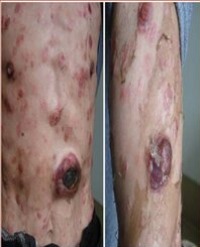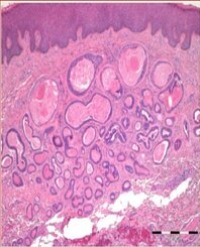
An Aggressive Epidermotropic Type of Cutaneous T-Cell Lymphoma: A Case Report
Mycosis Fungoides (MF) is the most common primary cutaneous lymphoma. Co-expression of CD4 and CD8 in a subset of atypical T-lymphocytes of MF is rare. Herein, we reported a case of CD4/CD8 dual-positive MF in a 70-year-old man. The biopsy demonstrated significant epidermotropism of atypical, hyperchromatic, cerebriform of lymphocytes. Immunohistochemical staining revealed that the lymphoid infiltrate is CD4/CD8 double positive with CD5 and CD7-positive
Jinxin Yang¹ and Zhu Shen¹*




